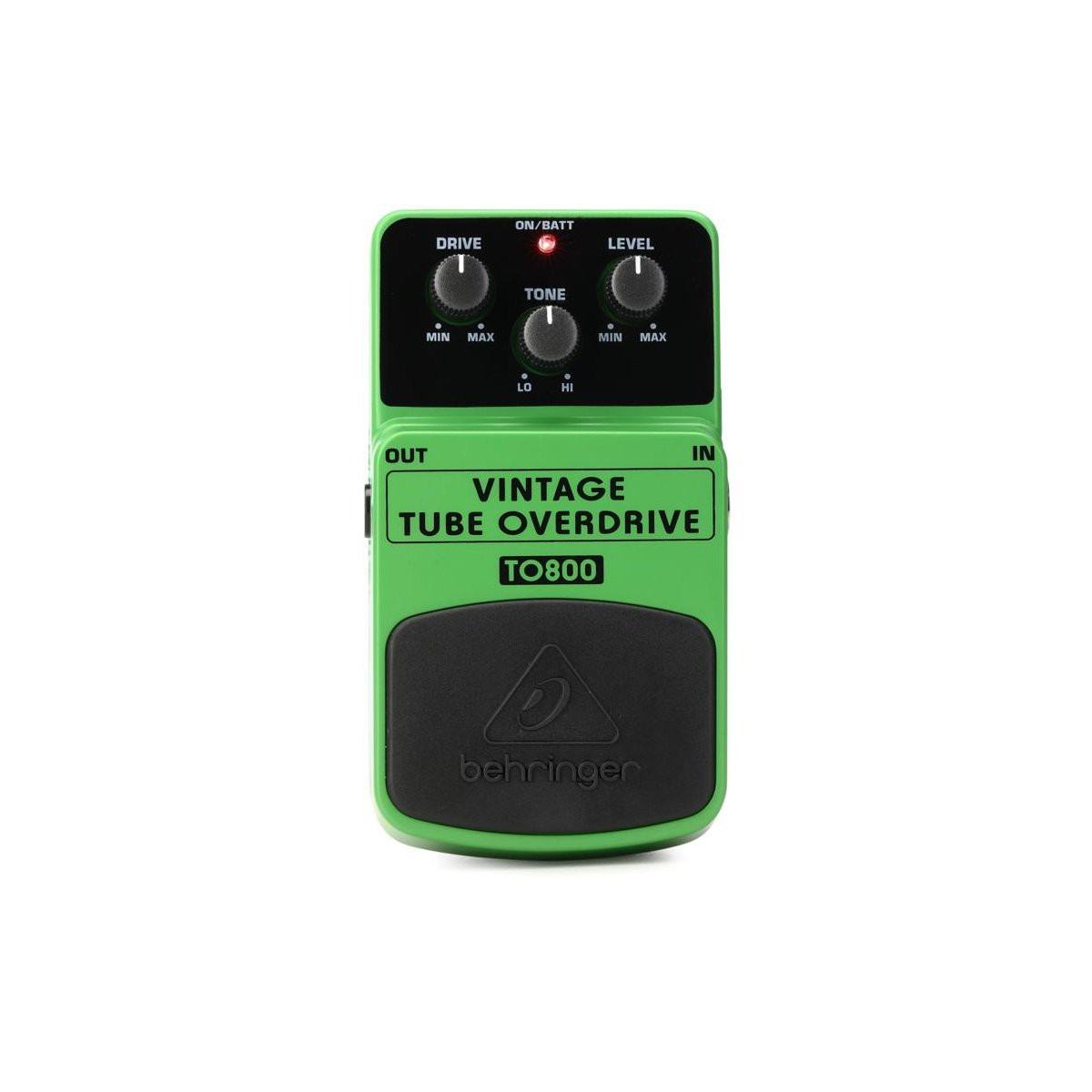Behringer has become a household name in the music gear world, and for good reason. They’ve built a reputation on providing incredibly affordable equipment, making music creation accessible to everyone. When it comes to guitar effects, Behringer offers a vast catalog of pedals that cover almost every sonic territory you can imagine. But with so many options available at such low prices, are Behringer Guitar Effects worth considering for your pedalboard? This article dives deep into the world of Behringer effects, exploring their range, sound quality, pros and cons, and helping you decide if they are the right choice for your guitar playing needs.
Why Choose Behringer Effects Pedals? Affordability Meets Versatility
The most compelling reason guitarists turn to Behringer effects is undoubtedly their price point. Compared to many boutique or even mainstream pedal brands, Behringer pedals are significantly cheaper. This affordability opens up a world of possibilities, especially for beginners or musicians on a tight budget. Instead of having to choose just one or two essential effects, you can experiment with a wider sonic palette without emptying your wallet.
Beyond just price, Behringer offers an impressive variety. Whether you’re looking for classic overdrive, lush delay, swirling chorus, or even more specialized effects like tremolo, flanger, or phaser, Behringer likely has a pedal to fit the bill. They’ve taken inspiration from iconic and sought-after pedals throughout history, offering their takes on these classic circuits at a fraction of the cost. This means you can explore legendary sounds and experiment with different effect types without a massive investment.
For guitarists just starting their journey into the world of effects pedals, Behringer provides an excellent entry point. They allow you to learn about different effect types, experiment with stacking and combining pedals, and discover your personal sonic preferences without the financial pressure of high-end gear. This accessibility is a major advantage, enabling more players to explore and shape their guitar tones.
Delving into the Behringer Effects Pedal Lineup
Behringer’s catalog is extensive, covering a wide spectrum of guitar effects. Let’s explore some of the key categories and popular pedals within their range:
Distortion and Overdrive: From Smooth Blues to Crushing Metal
Behringer offers a diverse selection of distortion and overdrive pedals, catering to various genres and playing styles. Some notable examples include:
-
TO800 Vintage Tube Overdrive: This pedal is a direct nod to the legendary Ibanez Tube Screamer. It delivers warm, smooth overdrive tones, perfect for blues, rock, and pushing a tube amp into sweet saturation. Guitarists appreciate it for its mid-boosted character and versatility as a clean boost or a mild overdrive.
 Behringer TO800 Vintage Tube Overdrive Pedal
Behringer TO800 Vintage Tube Overdrive PedalAlt Text: Behringer TO800 Vintage Tube Overdrive pedal, a budget-friendly option for classic overdrive tones, showcasing its green enclosure and controls.
-
HM300 Heavy Metal: If you’re after high-gain distortion for metal and hard rock, the HM300 is worth checking out. Inspired by the Boss HM-2 Heavy Metal, it provides a thick, chainsaw-like distortion that’s become iconic in certain genres. While it can be intense, some players find it surprisingly versatile for heavier styles.
-
OD300 Overdrive/Distortion: The OD300 aims for a more versatile overdrive and distortion range. It can deliver everything from subtle, amp-like breakup to more aggressive distortion tones, making it a flexible option for various rock and blues styles.
Delay and Reverb: Adding Depth and Space to Your Guitar Sound
Delay and reverb are essential for creating atmosphere and depth in your guitar tone, and Behringer offers several affordable options in this category:
-
DD400 Digital Delay: This digital delay pedal provides a wide range of delay times and modes, allowing you to create everything from short slapback echoes to long, ambient washes of sound. It’s a versatile and budget-friendly way to add delay to your pedalboard.
Alt Text: Behringer DD400 Digital Delay pedal, a cost-effective digital delay solution for guitarists, displayed on a white background.
-
DR400 Digital Reverb: The DR400 offers a variety of reverb types, including plate, hall, spring, and gate reverb, allowing you to simulate different acoustic spaces. It’s a useful pedal for adding natural-sounding reverb or more experimental, processed reverb effects to your guitar signal.
Modulation Effects: Chorus, Flanger, Phaser, and More
Modulation effects add movement and texture to your guitar tone. Behringer’s modulation pedal lineup includes:
-
CHORUS SPACE-D: This chorus pedal emulates the classic Roland Dimension D chorus, known for its subtle yet spacious and three-dimensional chorus effect. It’s often used to add width and richness to clean and slightly driven guitar tones.
-
VIBRATO: For wobbly, pitch-bending modulation, the Behringer Vibrato pedal delivers. It can create classic vibrato sounds reminiscent of vintage amps or more extreme, seasick-style pitch modulation.
-
PHASER: Behringer offers phaser pedals that recreate the swirling, psychedelic sounds of classic phasers. These pedals are great for adding movement and texture to clean tones or creating funky, phase-shifted effects.
Wah and Filter Pedals: Expressive Tone Shaping
For expressive control over your guitar’s tone, Behringer provides wah and filter pedals:
- HELL-BABE Wah Pedal: This wah pedal is inspired by the Dunlop Cry Baby wah, a standard in rock and funk music. It allows you to shape your guitar’s frequency response with your foot, creating expressive wah sounds for solos, rhythm playing, and funky grooves.
Multi-Effects and Specialty Pedals
Beyond individual effects, Behringer also offers multi-effects pedals and some unique specialty pedals:
-
Digital Reverb DR600: While similar to the DR400, the DR600 often packs in even more reverb algorithms and potentially enhanced control options, offering a wider palette of reverb sounds in a single pedal.
-
Ultra Chorus UC200: As another chorus option, the UC200 might offer different voicing or features compared to the CHORUS SPACE-D, providing guitarists with choices depending on their specific chorus needs.
The Pros and Cons of Behringer Guitar Effects
Like any gear, Behringer effects pedals have their advantages and disadvantages. Understanding these can help you make an informed decision:
Pros:
- Unbeatable Affordability: This is the primary draw. Behringer pedals allow you to build a diverse pedalboard on a very tight budget.
- Wide Variety: They offer a vast range of effect types, covering almost every sonic territory.
- Good Entry Point for Beginners: Affordable experimentation allows new players to learn about effects without significant financial risk.
- Decent Sound Quality for the Price: While not always boutique-level, many Behringer pedals offer surprisingly good sound quality, especially for their cost.
- Durable Enough for Home and Practice Use: While not built for extreme touring conditions, they are generally robust enough for home practice, rehearsals, and even smaller gigs.
Cons:
- Build Quality Concerns: Compared to higher-end pedals, Behringer pedals often use plastic enclosures and components, which may raise concerns about long-term durability, especially for heavy gigging musicians.
- Potentially Noisy Operation: Some users report that certain Behringer pedals can be noisier than more expensive counterparts, especially in terms of background hiss or hum. Power supply quality and proper pedalboard setup can mitigate this to some extent.
- Not Boutique Quality: If you are seeking the absolute highest fidelity, nuanced tones, and premium components found in boutique pedals, Behringer might not be the first choice. However, for many players, the difference in sound quality is negligible, especially in a live band mix.
- Cloned Designs: Behringer’s practice of creating pedals heavily inspired by or directly cloning existing designs is a point of contention for some. While it makes classic sounds accessible, it raises ethical questions about originality and innovation.
Who Are Behringer Effects Pedals For?
Behringer effects pedals are a great option for a variety of guitarists:
- Beginner Guitarists: The affordability and variety make them ideal for players just starting to explore effects and build their first pedalboard.
- Budget-Conscious Musicians: For players who need a wide range of effects but are on a tight budget, Behringer offers incredible value.
- Experimental Musicians: The low cost allows for experimentation with different effect types and combinations without a large investment.
- Backup or Practice Rigs: Some professional or gigging musicians might use Behringer pedals as backups or for practice rigs where high-end gear isn’t essential.
- Players Prioritizing Quantity over Absolute Quality: If you value having a wide palette of sounds available and are less concerned about chasing ultra-premium tones, Behringer is a strong contender.
Conclusion: Affordable Tone is Within Reach with Behringer
Behringer guitar effects pedals offer a compelling proposition: great sound and a wide range of effects at prices that are hard to beat. While they might not be built to the same standards as top-tier boutique pedals and may have some limitations, their affordability and versatility make them a valuable option for many guitarists. Whether you’re a beginner building your first pedalboard, a budget-minded musician needing a wide range of sounds, or simply someone who wants to experiment without breaking the bank, Behringer effects are definitely worth considering. Explore the Behringer lineup and discover how you can unlock inspiring tones without emptying your wallet.

